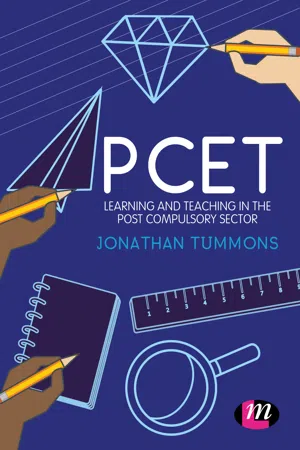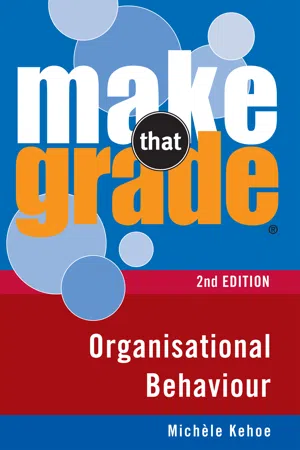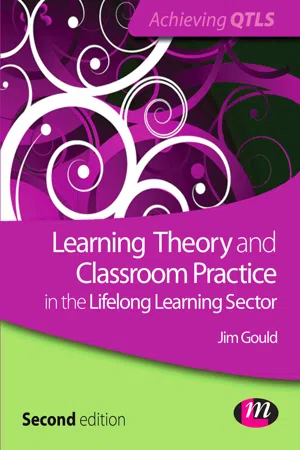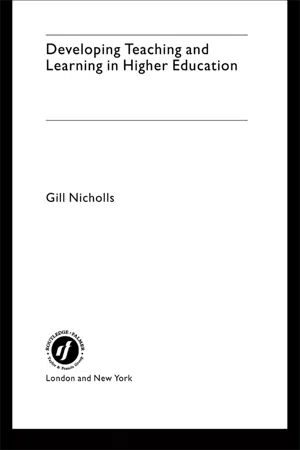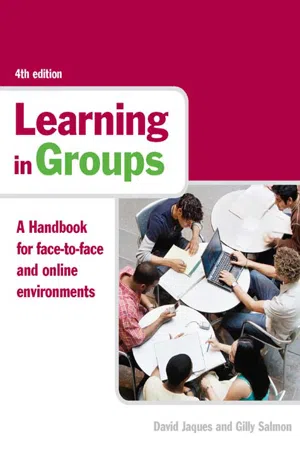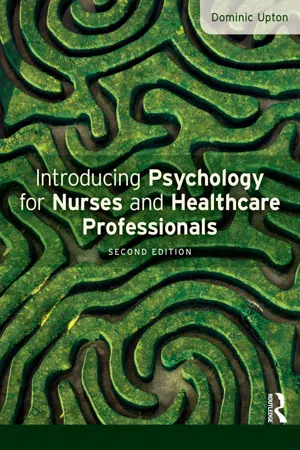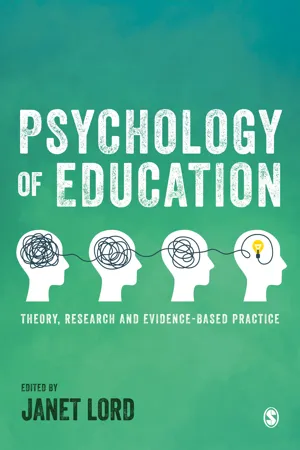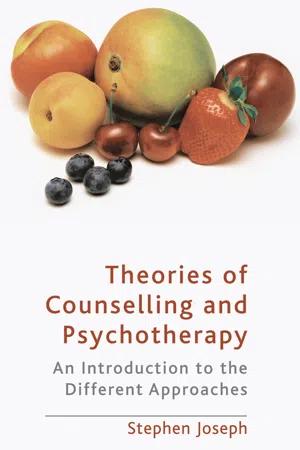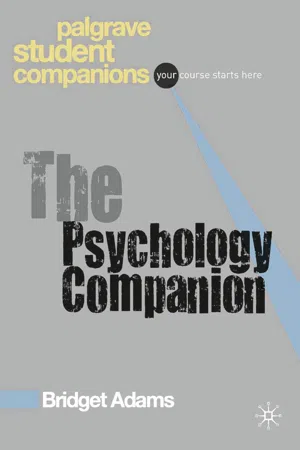Psychology
Learning Approaches
Learning approaches in psychology refer to the various theories and methods used to understand how individuals acquire new knowledge and skills. These approaches include behaviorism, cognitivism, constructivism, and humanism, each offering unique perspectives on the learning process. Behaviorism focuses on observable behaviors, while cognitivism emphasizes mental processes, and constructivism highlights the role of active learning and social interactions.
Written by Perlego with AI-assistance
Related key terms
Related key terms
1 of 4
Related key terms
1 of 3
11 Key excerpts on "Learning Approaches"
- eBook - ePub
PCET
Learning and teaching in the post compulsory sector
- Jonathan Tummons, Jonathan Tummons(Authors)
- 2019(Publication Date)
- Learning Matters(Publisher)
10 It’s all in the mind … or is it? Can an understanding of psychological approaches to learning enhance teaching? Janet LordKey words – learning; approaches; evidence; psychology; behaviourism; constructivism; humanism; neuroscienceIntroduction
This chapter introduces ideas about how people learn and of some of the different processes involved, and of different ways of thinking about these processes. It will consider constructivist, behaviourist, humanist and neuroscientific approaches to learning. The chapter will also discuss how best to use these understandings of learning in further and adult education settings.What are psychological theories of learning?
Psychological theories of learning are theories that explain how individuals learn; they are rooted in psychology. Many psychologists would explain learning as being a relatively permanent change in behaviour. Psychological theories of learning are theories that focus on the individual and the learning processes that the individual engages with or goes through in learning. Such theories comprise an organised set of principles explaining how individuals acquire, retain and recall knowledge.In this chapter we will look at four main theories:- Behaviourism emphasises the role of environmental factors in influencing behaviour. We learn new behaviour in various ways – learning through associating two stimuli or events; or through being reinforced for our behaviours; or by watching, imitating and learning from other people.
- Constructivism states that people construct their own understanding and knowledge of the world, through experiencing things and reflecting on those experiences.
- Humanism sees learning as a personal act to fulfil potential, and that learning is student-centred and personal.
- The neuroscientific approach
- eBook - ePub
- Michele Kehoe(Author)
- 2013(Publication Date)
- Gill Books(Publisher)
Table 4.2 Classical vs. operant approaches to learningEvaluation of behaviourist approachAlthough the contribution that the behaviourist model has made has been widely accepted, the approach is not without its criticisms, which include:- Ignoring the human ability to learn and engage in independent and complex thinking.
- Not considering the influence of the learner with regard to variables such as attitudes, emotions and level of motivation.
- Lack of attention to individual differences such as perceptions, attitudes, motivations, past experiences and expectations.
- Learning will cease in the absence of reinforcement.
The behaviourist approach to learning examined observable, reflexive responses. The challenge of the subsequent approach was to examine the mental or cognitive processes that affect learning and to understand what happens inside the head of the learner.4.4 The cognitive approachThe cognitive approach to learning is also called the information processing approach. It attempts to examine the cognitive, or mental, structures influencing learning. Cognition refers to mental activities, including thinking, remembering, learning and language use. The theorists who advocate this approach believe that mental processes are important and are amenable to study. Their proposition is that learning involves more than simple stimulus-response (S-R) links and that cognitive factors play a central role in learning. They believe that consideration should be given to the internal workings of the mind and that people are conscious and active participants in how and what they learn.According to cognitive theorists, people learn by drawing on their experiences, making choices about their behaviour and by acknowledging the consequences of their choices. Finally, they evaluate the consequences of their choices and add them to their experiences; this influences their future choices. - Jim Gould(Author)
- 2012(Publication Date)
- Learning Matters(Publisher)
4
Cognitive approaches
Chapter overview and objectives
This chapter explores cognitive views on learning, comparing them with the behaviourist perspective outlined in Chapter 2 . Cognitive is an umbrella term for several different approaches but all share the common feature of looking for meaning and understanding. Comparison with behaviourism will be made easier by providing answers to the same issues previously considered in Chapter 2 , although not necessarily in the same order.When you have worked through this chapter you will be able to:- recognise the strengths and limitations of the behaviourist perspective on learning;
- state the defining characteristics of the cognitive perspective on learning;
- describe the contribution of Gestalt psychology to an understanding of the learning process;
- define learning from a cognitive perspective and identify its source of motivation;
- differentiate between the approaches to learning advocated by Bruner and Ausubel;
- compare behaviourist and cognitive perspectives on learning.
Cognitivism as a reaction to behaviourism
The last two chapters have dealt in some detail with behaviourism and how this particular perspective on learning can be translated into practice. Behaviourism was the major influence on educational practice in the 1960s and 1970s and it is clear that there are some distinct advantages in using this approach to teaching and learning.Behaviourism introduced precision into the teaching and learning process, moving the emphasis away from content and towards the learning that was to take place. This precision and shift of emphasis allowed for a more accurate and exacting assessment process, an important consideration in a time of movement towards increased accountability in education. Furthermore, the ‘scientific’ approach upon which behaviourism was based, led easily into a systematic approach to planning.- Gill Nicholls(Author)
- 2002(Publication Date)
- Routledge(Publisher)
The most influential research over the past twenty years about how students learn has been the concept of ‘approaches to learning’. This concept requires an understanding that the way individuals go about learning is a relationship between the individual and the material being learned. It requires an appreciation that the relationship between the individual and the material being learned depends on how the individual makes sense of a particular learning assignment, task or activity. In this context learning is always related to learning something. The concept of approach describes a qualitative aspect of learning. It is about how individuals experience and organise the subject matter or learning task; it is about ‘what’ and ‘how’ they learn, rather than how much they remember (Ramsden, 1992). An underlying implication from approaches to learning is that whatever any one student learns, he or she will relate to different tasks in different ways.Deep approach to learning
This approach can be summarised in the following way:Deep approach to learning is exemplified as an intention to understand and seek meaning, leading students to attempt to relate concepts to existing experiences distinguishing between new ideas and existing knowledge and critically evaluating and determining key themes and concepts. Students aim to achieve maximum meaning from their studying, which is achieved by high levels of cognitive processing throughout the learning activity. Facts are learned in the context of meaning.- Intention to understand.
- Student maintains structure of task.
- Focus on ‘what is signified’ (e.g. the author’s argument or the concepts applicable to solving the problem).
- Relate previous knowledge to new knowledge.
- Relate theoretical ideas to everyday experience.
- Relate and distinguish evidence and argument.
- Organise and structure content into a coherent whole. Internal
- eBook - ePub
Learning in Groups
A Handbook for Face-to-Face and Online Environments
- David Jaques, Gilly Salmon(Authors)
- 2007(Publication Date)
- Routledge(Publisher)
Explorations of learning styles challenge many assumptions and continue to suggest alternative solutions in the realm of student learning. They also present insights into the value of group work and the way in which groups may be organised and run to greater effect.Our attention now focuses less on trying to change learners and more on changing the way they experience, perceive and conceptualise their learning in groups.THE NATURE OF LEARNING
‘Many theories and insights exist in respect of what learning in fact comprises. They depend as much on the orientation of the definer as on the nature of learning’ (Brown 2004).For a committed behaviourist, learning is the modification of behaviour brought about by experience. For most cognitive psychologists, learning is the study of how information is sensed, stored, elaborated and retrieved. Others stress the importance of metacognition – learning to learn – or reflection on action as well as experience per se.Humanistic psychologists are more likely to insist that personal growth and development are at the heart of learning, while constructivists argue that learning is primarily concerned with how people develop different conceptions and constructions of reality.These different views of learning are themselves examples of constructivism at work, of how different people view learning. Each view leads to a different emphasis and consequent neglect of other features of learning.Behaviourism led to the use of learning objectives and outcomes as a means of setting directions to learning. Mager (1984) asserted ‘If you don't know where you are going, it is difficult to select a suitable means for getting there.’ It focuses on what the learner is expected to be able to do as a result of their activity, how they should demonstrate their achievement, the conditions under which that will occur, and what the criteria will be for acceptable performance. It says little about the process of the journey, though it can help in creating and clarifying learning outcomes (see Chapter 5 - Dominic Upton(Author)
- 2013(Publication Date)
- Routledge(Publisher)
cognitive revolution ’, and grew in part out of increasing dissatisfaction with behaviourist explanations. Cognitive psychology is concerned with human thought processes and the ways in which these processes interact with behaviour (Eysenck and Keane, 2010). There are many facets of cognitive psychology but some of the major areas include memory, learning, intelligence, thinking and language. Like behaviourism it too rejects introspection as a valid method of investigation and maintains that the only true source of knowledge is that which is obtained through observation and experiment (Eysenck and Keane, 2010). Yet somewhat incongruous to this is the fact that it explicitly acknowledges the existence of unobservable mental processes. Although there have been many contributors to cognitive psychology, no specific person can be identified as central to its development. What is more, unlike other approaches cognitive psychology does not yet have a unifying theory.Information processingAssumptions of the cognitive approachAcknowledges the existence of unobservable mental processes and emphasises their importance in determining and predicting behaviour. Accepts empiricist ideas and use of the scientific method. Is based mainly on laboratory experiments. Views the mind as an information processor, i.e. it computes answers to problems in a manner analogous to a computer. Psychologists have often tried to understand human cognition by comparing it with something less abstract and better understood. Hence the advent of the modern digital computer provided psychologists with an ideal metaphor for conceptualising how the mind worked and inspired what is now the main paradigm within cognitive psychology: the information processing approach (e.g. Forgas and Jennifer, 2001). According to this approach, the mind is analogous to an information processing system: inputting, storing and retrieving data. This system is used in flexible ways to handle all kinds of cognitive tasks, from reading the newspaper to playing a game of chess. An early version of the information processing approach is shown in Figure 2.4- eBook - ePub
Psychology of Education
Theory, Research and Evidence-Based Practice
- Janet Lord, Janet Lord(Authors)
- 2022(Publication Date)
- SAGE Publications Ltd(Publisher)
Cognitive psychology is the scientific study of human cognition and is related to how we think and process information. It covers several aspects including perception, attention, memory, language, learning and problem solving. It often involves recruiting participants to take part in experiments which assess behaviours to provide an insight into the individuals’ cognitive processes. Commonly, individuals will complete a task in a laboratory setting, which could be, for example, a driving simulation to test their attention, or a learning or memory task to assess recall or processing.Many believe cognitive psychology can be dated back as far as 384–322 BCE, with the ancient Greek philosopher Aristotle highlighting his ideas surrounding learning and imagery. Aristotle strongly promoted the concept of introspection; he viewed the only way to study thoughts and thought processes was to ask the individual to assess and describe them themselves. It allowed the individual to self-examine their conscious perceptions and mental state; it may be easier to consider this as a process of in-depth self-reflection or self-analysis.Cognitive neuroscience bridges the disciplines of cognitive psychology and neuroscience. Those interested in cognitive psychology tend to focus upon the science of the mind and behaviour, whereas neuroscience focuses upon an in-depth study of the brain and its process and functions in addition to behaviour. Those conducting research in the area explore this by asking participants to complete tasks within a laboratory setting combined with brain imaging techniques, such as functional magnetic resonance imaging (fMRI), positron emission tomography (PET) and electroencephalography (EEG).Behaviourism
During the 20th century one of the key approaches referred to within the psychology discipline was that of behaviourism. This is an approach which focuses upon conducting rigorous psychological experiments to try to explain the role which conditioning has in learning. Behaviourists strongly promote that psychology is a science, and therefore it cannot rely solely on the concept of introspection. They instead view that it needs to be based upon data which are observable and can be measured. - eBook - ePub
Theories of Counselling and Psychotherapy
An Introduction to the Different Approaches
- Stephen Joseph(Author)
- 2010(Publication Date)
- Bloomsbury Academic(Publisher)
Chapter 4Behavioural and Cognitive Approaches
Introduction
In this chapter the behavioural and the cognitive models will be introduced. In contrast to the psychodynamic model, which, as we have seen in the previous chapter, emphasizes unconscious forces, the behavioural model emphasizes the observable behaviour of people. The reason for this shift in emphasis, as I shall go on to describe in more detail, came partly as a response to the early criticisms of psychoanalysis. A major criticism was that psychoanalysis had failed in its aspiration to be a science of the mind. Thus, the founders of behavioural psychology were concerned that their approach should be grounded securely in scientific thinking, and that their theories would be amenable to measurement and scientific testing. Despite their differences, however, both the psychodynamic and behavioural models present a deterministic view of human functioning. In the behavioural model environmental factors are thought to shape our behaviour and our behaviour is the sum of all we have learned. However, over time many began to think that the behavioural model was limited in its explanatory power and so cognitive determinants of behaviour began to be introduced, resulting in a synthesis of the two approaches – what is known as the cognitive-behavioural model.Behavioural model
The behavioural model has its roots in academic psychology. Understanding the processes through which learning took place increasingly became a main concern of psychologists in the first half of the twentieth century. As we have seen in the previous chapter, the argument that there was a need for research into the effectiveness of psychotherapy and counselling came about in part because of criticisms of the psychodynamic model for its unscientific nature and lack of effectiveness as a therapeutic approach (Eysenck, 1952, 1965). In response to Eysenck’s criticisms of psychoanalysis, psychologists began to apply the principles of learning that had been discovered in the laboratory to clinical practice. In contrast to psychoanalysis, which focuses on the internal processes of the person, the behavioural model focuses on the environmental conditions that shape our behaviour. Theorists in the behavioural tradition have emphasized two types of conditioning: classical conditioning and operant conditioning. - eBook - ePub
- Bridget Adams(Author)
- 2009(Publication Date)
- Bloomsbury Academic(Publisher)
2 approaches in psychology approaches 2.1 Ways of looking at the behaviour and minds of people 2.2 Core approaches 2.3 Other approaches 2.1 Ways of looking at the behaviour and minds of people Scientific nature of enquiry Like all methods of enquiry, in history, philosophy, literature and so on, the purpose of scientific research is to increase our knowledge and understanding. All science is concerned with similarities between things in the search for the underlying ‘oneness’ of the universe (see Metaphysics below) and in defining the differences that enable us to label and classify. Some definitions of science Allport (1947): [Science provides] understanding, prediction and control above the levels achieved by unaided common sense. Wright et al (1970): The term ‘experimental psychology’ has been used for several decades to refer to scientific psychology, which uses mainly experimental methods, as opposed to kinds of psychology based mainly on philosophic or therapeutic considerations. . . . Psychology bridges the gap between the biological and the social sciences. Searle (1989: 11): All sorts of disciplines that are quite unlike physics and chemistry are eager to call themselves ‘sciences’. A good rule of thumb to keep in mind is that anything that calls itself ‘science’ probably isn’t – for example, Christian science, or military science, and possibly even cognitive science or social science. . . . There is only knowledge and understanding. . . . some disciplines are more systematic than others, and we might want to reserve the word ‘science’ for them. Collingwood (1998: 4): The word ‘science’, in its original sense, which is still its proper sense not in the English language alone but in the international language of European civilization, means a body of systematic or orderly thinking about a determinate subject matter. . . . There is also a slang sense, unobjectionable (like all slang) on its lawful occasions. . - eBook - ePub
Sport Coaching Concepts
A framework for coaching practice
- John Lyle, Chris Cushion(Authors)
- 2016(Publication Date)
- Routledge(Publisher)
Coaching practice is, therefore, designed to align with the components and stages central to an information-processing type of approach. From this perspective, encoding and retrieval strategies align to explicitly define skills and knowledge that the athlete will learn and subsequently produce (Schuh & Barab 2007). Although the learning outcome may be an identifiable behaviour, the coach remains interested in the athlete’s knowledge structures – and the development of knowledge structures, schema, conceptual frameworks and so on is to talk in cognitive terms about knowledge and practice. In coaching, this presents a non-personal and objective view of knowledge, skills, tasks, activities and learning (Lave & Wenger 1996). Subsequent coaching practice will result in coach ‘instruction’ driven by knowledge while being governed by mechanisms to be understood in terms of acquisition and assimilation of said knowledge (Lave & Wenger 1996).KEY CONCEPT
The development of knowledge structures, schema, conceptual frameworks and so on is to talk in cognitive terms about knowledge and coaching practice.Cognitive constructivism
In understanding coaching, a number of models of practice are routinely conceptualised as ‘constructivist’ in their assumptions – typically these are ‘game based’ or ‘game centred’ approaches (e.g. ‘TGfU’, ‘Game Sense’). However, there is typically a lack of conceptual clarity that can create difficulty in understanding what ‘constructivism’ means. Cognitive constructivism is generally aligned with the work of Piaget (Cassidy et al. 2016; Schuh & Barab 2007). This link to Piaget synthesised the various names that had been applied to this perspective:■ radical constructivism (Derry 1996; von Glasersfeld 1995);■ cognitive constructivism (Cobb 1994; Duffy & Cunningham 1996);■ psychological constructivism (Prawat 1995);■ constructivism (Bednar et al. 1995).Cognitive constructivism has emerged as a theoretical entity separate from cognitivism and social constructionism. Chiefly, the differences lie in the emphasis on individual cognitive processes or the social co-construction of knowledge, and this also marks differing ontologies and epistemologies, resulting in differences in coaching practice. (Cognitive) constructivism argues that individuals construct the world of experience through cognitive processes with a dualist epistemology and ontology (Young & Collin 2004). These processes are internal to the individual, involving the integration of knowledge (or meaning) in pre-existing schemes, or changing the schemes to fit the environment (assimilation and accommodation, respectively) (Piaget & Inhelder 1969). - eBook - ePub
Classroom Management
A Practical Approach for Primary and Secondary Teachers
- Harry Ayers, Francesca Gray(Authors)
- 2013(Publication Date)
- Routledge(Publisher)
cognitive processes influence the learning and behaviour of both teachers and pupils. Cognitions include beliefs and theories about learning and behaviour, self-image and self-esteem, attitudes and imaginings. Such cognitions may or may not be based on logical and empirical evidence.The cognitive approach TheoryThe cognitive approach has been developed by A. Beck and A. Ellis, and is based on the idea of schemata, i.e. mental structures that process and interpret experiences. People can develop schemata that negatively interpret experiences, thus making them prone to emotional and behavioural problems or alternatively exacerbating them. People can also develop faulty or distorted ways of reasoning. Cognitions can be changed by questioning the empirical or logical foundations of thinking processes and belief systems.Cognitive theory sees cognitions and changes in cognitions as affecting the way pupils learn and behave in the classroom. Pupils develop cognitions about the school and classroom context, about their teachers and about other pupils. In turn, teachers develop cognitions about the school and classroom context, about their pupils and about other teachers.Faced by an external event teachers and pupils will process that event through internal mediation. They interpret or construct or give meaning to that event and relate that meaning to stored information and memories. New information is either assimilated into pre-existing cognitive schemas or cognitive schemas are accommodated to process new information. Therefore learning can be conceptualised as changes in cognitive schemas. Effective teaching facilitates changes in cognitive schemas.Teachers may possess different and possibly conflicting theories or beliefs about the best way to teach and the ways in which pupils come to learn and behave, for example the use of phonics as against the ‘real books’ approach to reading, or the use of rewards as against the punishment approach to behaviour. Pupils may possess different levels of self-esteem or different notions of the roles of teachers.
Index pages curate the most relevant extracts from our library of academic textbooks. They’ve been created using an in-house natural language model (NLM), each adding context and meaning to key research topics.
Explore more topic indexes
Explore more topic indexes
1 of 6
Explore more topic indexes
1 of 4
